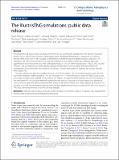| dc.contributor.author | Nelson, Dylan | |
| dc.contributor.author | Springel, Volker | |
| dc.contributor.author | Pillepich, Annalisa | |
| dc.contributor.author | Rodriguez-Gomez, Vicente | |
| dc.contributor.author | Torrey, Paul A. | |
| dc.contributor.author | Genel, Shy | |
| dc.contributor.author | Vogelsberger, Mark | |
| dc.contributor.author | Pakmor, Ruediger | |
| dc.contributor.author | Marinacci, Federico | |
| dc.contributor.author | Weinberger, Rainer | |
| dc.contributor.author | Kelley, Luke | |
| dc.contributor.author | Lovell, Mark | |
| dc.contributor.author | Diemer, Benedikt | |
| dc.contributor.author | Hernquist, Lars | |
| dc.date.accessioned | 2020-12-22T15:21:53Z | |
| dc.date.available | 2020-12-22T15:21:53Z | |
| dc.date.issued | 2019-05-14 | |
| dc.identifier.issn | 2197-7909 | |
| dc.identifier.uri | https://hdl.handle.net/1721.1/128889 | |
| dc.description.abstract | We present the full public release of all data from the TNG100 and TNG300 simulations of the IllustrisTNG project. IllustrisTNG is a suite of large volume, cosmological, gravo-magnetohydrodynamical simulations run with the moving-mesh code Arepo. TNG includes a comprehensive model for galaxy formation physics, and each TNG simulation self-consistently solves for the coupled evolution of dark matter, cosmic gas, luminous stars, and supermassive black holes from early time to the present day, z = 0. Each of the flagship runs—TNG50, TNG100, and TNG300—are accompanied by halo/subhalo catalogs, merger trees, lower-resolution and dark-matter only counterparts, all available with 100 snapshots. We discuss scientific and numerical cautions and caveats relevant when using TNG.
The data volume now directly accessible online is ∼750 TB, including 1200 full volume snapshots and ∼80,000 high time-resolution subbox snapshots. This will increase to ∼1.1 PB with the future release of TNG50. Data access and analysis examples are available in IDL, Python, and Matlab. We describe improvements and new functionality in the web-based API, including on-demand visualization and analysis of galaxies and halos, exploratory plotting of scaling relations and other relationships between galactic and halo properties, and a new JupyterLab interface. This provides an online, browser-based, near-native data analysis platform enabling user computation with local access to TNG data, alleviating the need to download large datasets. | en_US |
| dc.publisher | Springer Science and Business Media LLC | en_US |
| dc.relation.isversionof | http://dx.doi.org/10.1186/s40668-019-0028-x | en_US |
| dc.rights | Creative Commons Attribution | en_US |
| dc.rights.uri | https://creativecommons.org/licenses/by/4.0/ | en_US |
| dc.source | Springer International Publishing | en_US |
| dc.title | The IllustrisTNG simulations: public data release | en_US |
| dc.type | Article | en_US |
| dc.identifier.citation | Nelson, Dylan et al. "The IllustrisTNG simulations: public data release." Computational Astrophysics and Cosmology 6, 1 (May 2019) : 2 | en_US |
| dc.contributor.department | MIT Kavli Institute for Astrophysics and Space Research | en_US |
| dc.contributor.department | Massachusetts Institute of Technology. Department of Physics | en_US |
| dc.eprint.version | Final published version | en_US |
| dc.type.uri | http://purl.org/eprint/type/JournalArticle | en_US |
| eprint.status | http://purl.org/eprint/status/PeerReviewed | en_US |
| dc.date.updated | 2020-06-26T13:29:13Z | |
| dc.language.rfc3066 | en | |
| dc.rights.holder | The Author(s) | |
| dspace.embargo.terms | N | |
| dspace.date.submission | 2020-06-26T13:29:13Z | |
| mit.journal.volume | 6 | en_US |
| mit.journal.issue | 1 | en_US |
| mit.license | PUBLISHER_CC | |
| mit.metadata.status | Complete | |
